Diagram of proper fitting of hose end and hoses
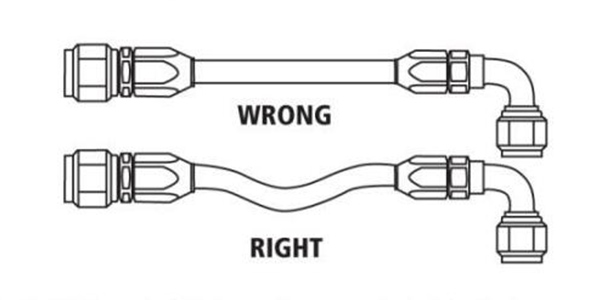
1. Provide for length change.
In straight hose installations, allow enough slack in the hose line to provide for changes in length that will occur when pressure is applied. This change in length can be from +2% to -4%.
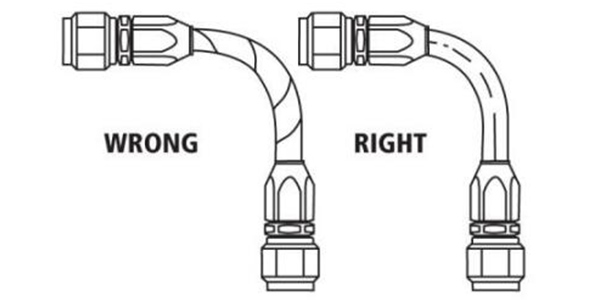
2. Avoid twisting and orient properly.
Do not twist during installation. This can be determined by the printed layline on the hose. Pressure applied to a twisted hose can cause hose failure or loosening of connections.
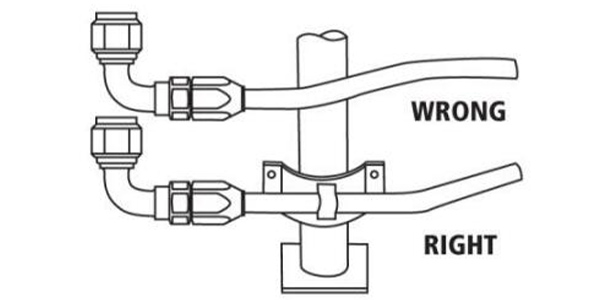
3. Protect from hazardous environment.
Kepp hose away from hot parts. High ambient temperature will shorten hose life. If you can not route if away from heat source, insulate it.
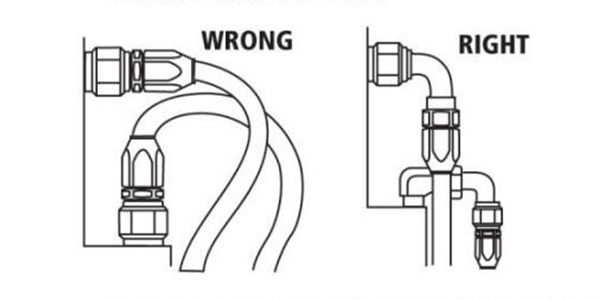
4. Avoid mechanical strain.
Use elbows and adapters in the installation to relieve strain on the assembly and to provide easier and neater installation that are accessible for inspection and maintence.
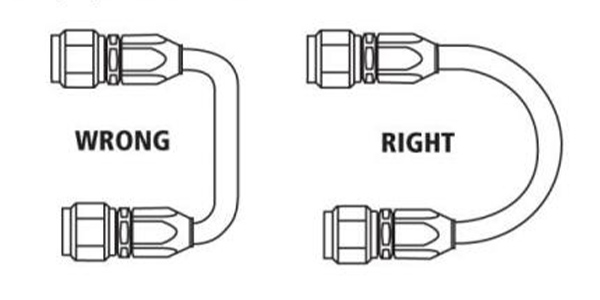
5. Use proper bend radius.
Keep the bend redius of the hose as large as possible to avoid collapsing of the hose and restriction of flow. Follow catalog specs on minimum bend radii.
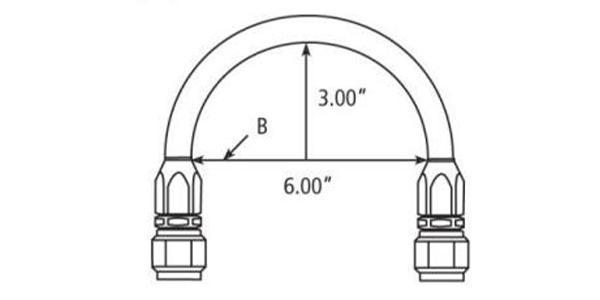
6. Use proper bend radius(cont'd)
Minimum bend radius is measured on the inside bend of the hose. To determine minimum bend, divide the total distance between ends (B length) by 2. For example, B=6, minimum bend radius=3.
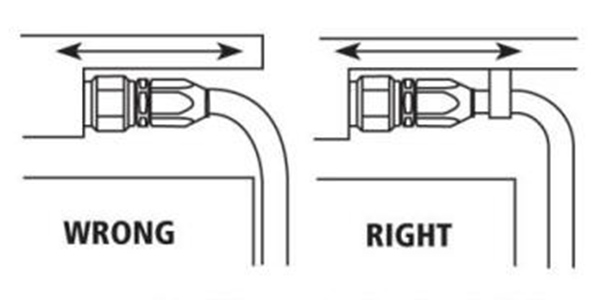
7. Secure for protection.
Install hose runs to avoid rubbing or abrasion. Use Hose Clamps to support long runs of hose or to keep away from moving parts. It's important that the clamps not allow the hose to move. This movement will cause abrasion and temperature hose failure.
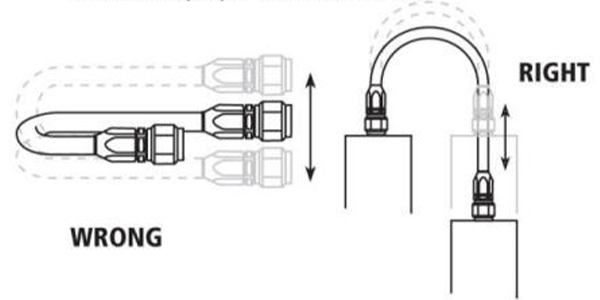
8. Avoid improper hose movement.
Make sure relative motion of the machine components produces bending rather than twisting of the hose. Hose should be routed so that the flex is in the same plane as the equipment movement.


